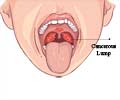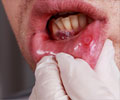Study shows low-cost videoscopes can effectively capture oropharyngeal images for HPV-associated cancer screening, offering a practical, accessible option.
- Low-cost videoscopes provide clear oropharyngeal images suitable for screening
- Participants found the technology easy to use but faced challenges with tongue control and lighting
- The technology promises increased accessibility and convenience for early cancer detection
Using Low-cost Videoscopes to Obtain Accurate Video "Oral Selfies" as Screening for HPV-associated Oropharyngeal Cancer: A New Screening Technology?
Go to source). This study aims to evaluate the feasibility of using low-cost videoscopes to capture high-quality "oral selfies" for the screening of HPV-associated OPSCCs. By leveraging inexpensive technology, the goal is to provide an accessible screening method that can be implemented in diverse healthcare settings.
Healthy volunteers were recruited to participate in the study. A low-cost industrial videoscope was used to capture videos of the oropharynx. The participants were instructed to record a 20-30 second video of their oropharynx using the videoscope. The procedure involved positioning the videoscope’s head between the maxillary central incisors to capture all relevant anatomical landmarks of the oropharyngeal region.
Low-cost videoscopes could revolutionize early HPV cancer detection with just an "oral selfie." #medindia #healthtechnology #HPV’
What the Study Revealed About Low-Cost Videoscope Screening
Feasibility: Participants found the videoscope easy to use and were able to capture clear images of their oropharynx.Video Quality: The quality of the recorded videos was assessed, with most videos deemed suitable for screening purposes. However, some participants struggled with controlling tongue position and ensuring adequate lighting.
The study demonstrates that low-cost videoscopes can be a viable tool for self-screening of HPV-associated OPSCCs. While there are limitations, such as the need for user training and potential challenges with tongue control, the technology’s affordability and ease of use make it a promising option.
Potential Benefits of Low-Cost Videoscope Screening
Accessibility: Low-cost videoscopes can be easily obtained and used in various settings, including homes and community health centers.Convenience: Self-screening allows individuals to monitor their health at their own convenience and without the need for appointments.
Early Detection: Early detection of HPV-associated OPSCCs can improve treatment outcomes and reduce healthcare costs.
Challenges and Future Directions in Low-Cost Videoscope Screening
User Training: Providing clear instructions and guidance to participants is essential for ensuring accurate and consistent video capture.Tongue Control: Techniques for controlling tongue position may need to be developed to improve image quality.
Lighting: Adequate lighting is crucial for clear visualization of the oropharynx.
Validation: Further studies are needed to validate the accuracy and effectiveness of videoscope-based screening for HPV-associated OPSCCs.
This pilot study provides evidence for the feasibility of using low-cost videoscopes for self-screening of HPV-associated OPSCCs. While there are challenges to address, the potential benefits of this technology warrant further investigation and development. Future research should focus on improving user training, addressing technical limitations, and validating the accuracy of videoscope-based screening.
Reference:
- Using Low-cost Videoscopes to Obtain Accurate Video "Oral Selfies" as Screening for HPV-associated Oropharyngeal Cancer: A New Screening Technology? - (https://www.xiahepublishing.com/2835-3315/CSP-2024-00005)
Source-Medindia
















